Want to get more out of your RV? Subscribe to the Camping World YouTube channel, and never miss a video.
RV converters and RV inverters are essential to supply the correct type of electricity to your RV appliances. The video above helps explain why these two devices are essential and where to find them in your RV. But here’s a written breakdown.
What is an RV Converter?
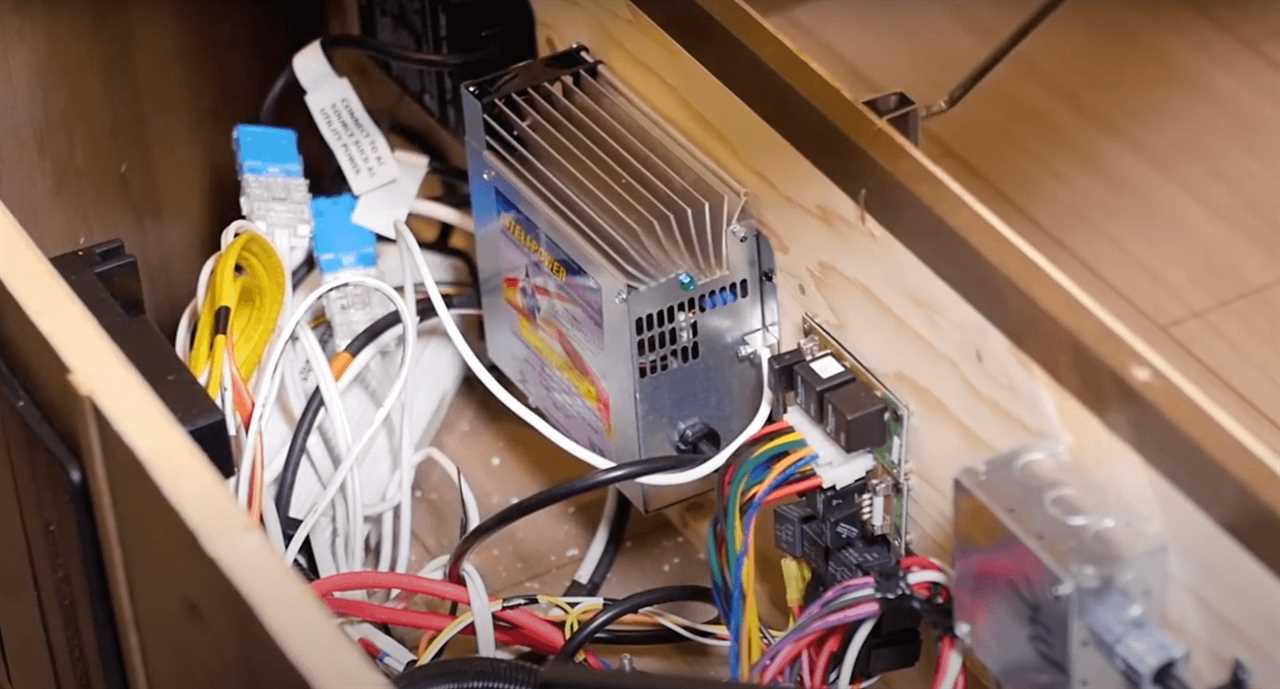
Photo by Camping World
When you hook your RV up to 30 or 50 amp shore power, that power comes into your RV as alternating current (AC). An RV converter changes that 120-volt AC to 12-volt direct current (DC), allowing you to use appliances that require DC and charge your RV battery simultaneously. Your converter will typically be found next to your RV’s fuse box and breakers.
What Happens When the RV Converter Goes Bad?
When it goes bad, your converter will give you one of three main warning signs. These can vary depending on make and model, but you’ll typically see one of three things when your RV converter goes bad:
- Onboard batteries won’t hold a charge. This could be a bad battery or a bad converter, so further testing is required.
- Interior lights aren’t as bright as normal.
- Vent fans are spinning slowly.
Both of these final points can be signs that these small RV appliances aren’t getting enough power.
How to Troubleshoot RV Converters
Testing an RV converter is a delicate process that must be completed in the correct sequence. Consult your owner’s manual for specific testing instructions from the manufacturer, as the exact voltages and recommended testing sequence may vary from model to model.
But these quick tests will help you test most RV power converters:
Test your Coach Battery
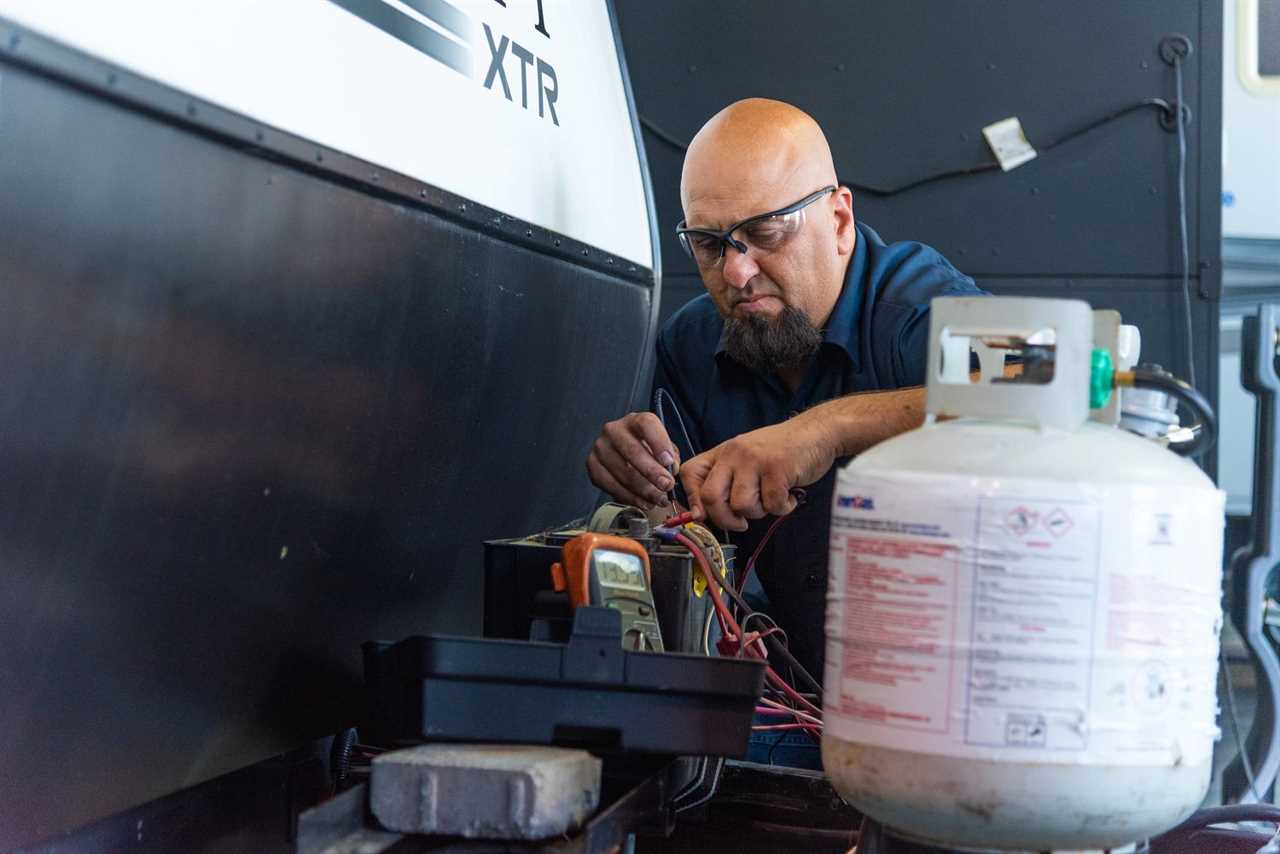
Photo by Camping World
- Disconnect from all power sources.
- Turn off the engine, generator, and inverter.
- Connect a voltage meter to battery terminals to test.
- Set your voltage meter to the Volts DC setting.
- Your battery should maintain a consistent charge between 12.3 and 12.9 volts DC.
- If you get a reading below 12.3 volts DC, recharge the battery until you get a reading between 12.3 and 12.9 volts DC.
- Then wait 2-3 hours and re-test.
- If your battery isn’t holding a charge, it needs to be replaced.
Test your Converter’s Output Voltage
- Disconnect battery cables from the coach battery.
- Plug your RV into a reliable AC power source.
- Set your volt meter to the Volts DC setting.
- Place the meter’s probes on the disconnected battery cables.
- Red probe to the positive battery wire.
- Black probe to the negative battery wire.
- Ensure good connections to the cables.
- Voltage should read between 13.6 and 14.4 volts DC if the converter functions correctly.
- If the output voltage reads 0.0 volts DC or the battery isn’t charging:
- If equipped, ensure the battery disconnect switch is in the normal use position.
- Check for an open inline fuse in the battery wire circuit.
- Check for loose wiring connections.
Check for a Reverse Battery Hookup (if no DC output comes from your converter)
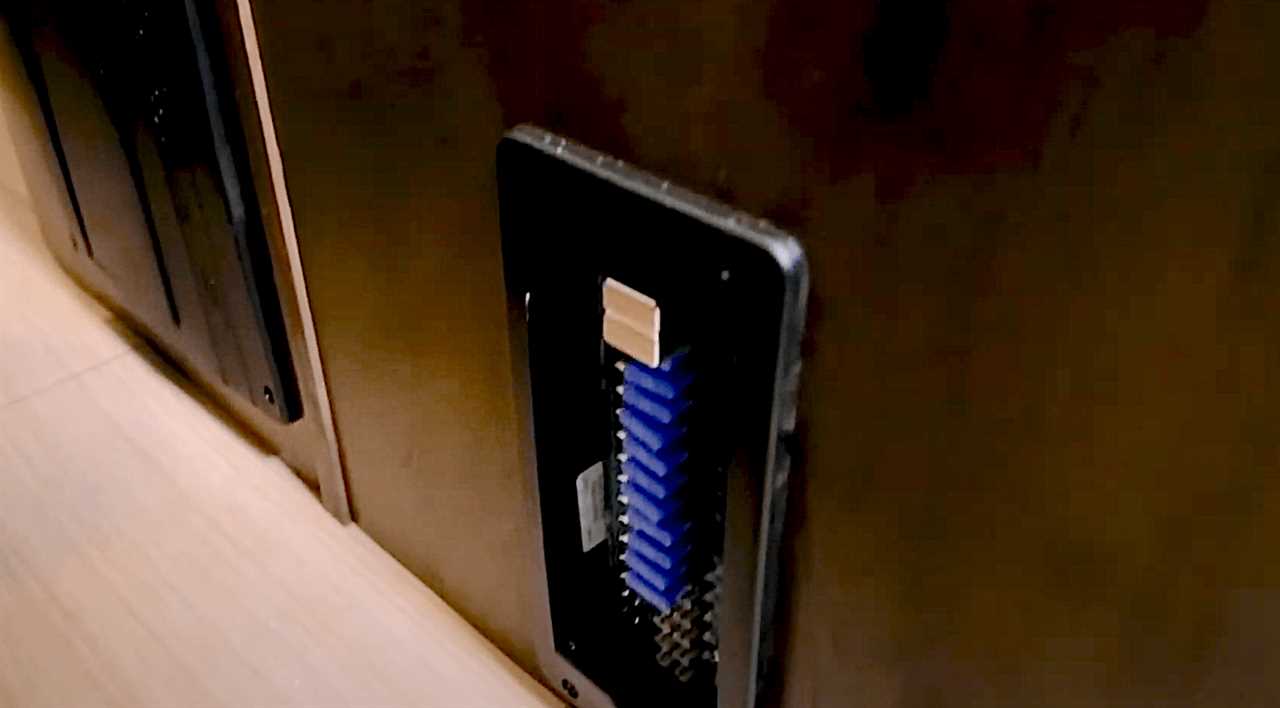
Photo by Camping World
- Check the reverse polarity fuses on your RV’s fuse board.
- Visually inspect them for breaks in the fuse element.
- If no breaks are found, use a continuity tester to test for continuity.
- If you find blown fuses, it’s a sign that your RV battery was connected in reverse.
- This could be the case at the battery or the converter.
- Check the cables at both locations and reconnect them properly.
- Replace the blown fuse with a fuse of the same type and Amperage rating as the original.
If no blown fuses are found, the connections to the battery and/or converter aren’t reversed, and you’re still getting an output voltage of 0.0 volts DC, contact the manufacturer or your nearest Camping World Service Center for further troubleshooting assistance.
Some RV converters are also equipped with an AC reverse polarity protection feature. If the AC neutral wire and the lead wire coming into your converter are connected backward, it triggers this protection feature and shuts your converter down.
Some converters may have an audible alarm that sounds when the AC wires aren’t connected properly. If your converter is equipped, the alarm will continue to sound until the wires are appropriately reconnected.
Will an RV Converter Work Without a Battery?
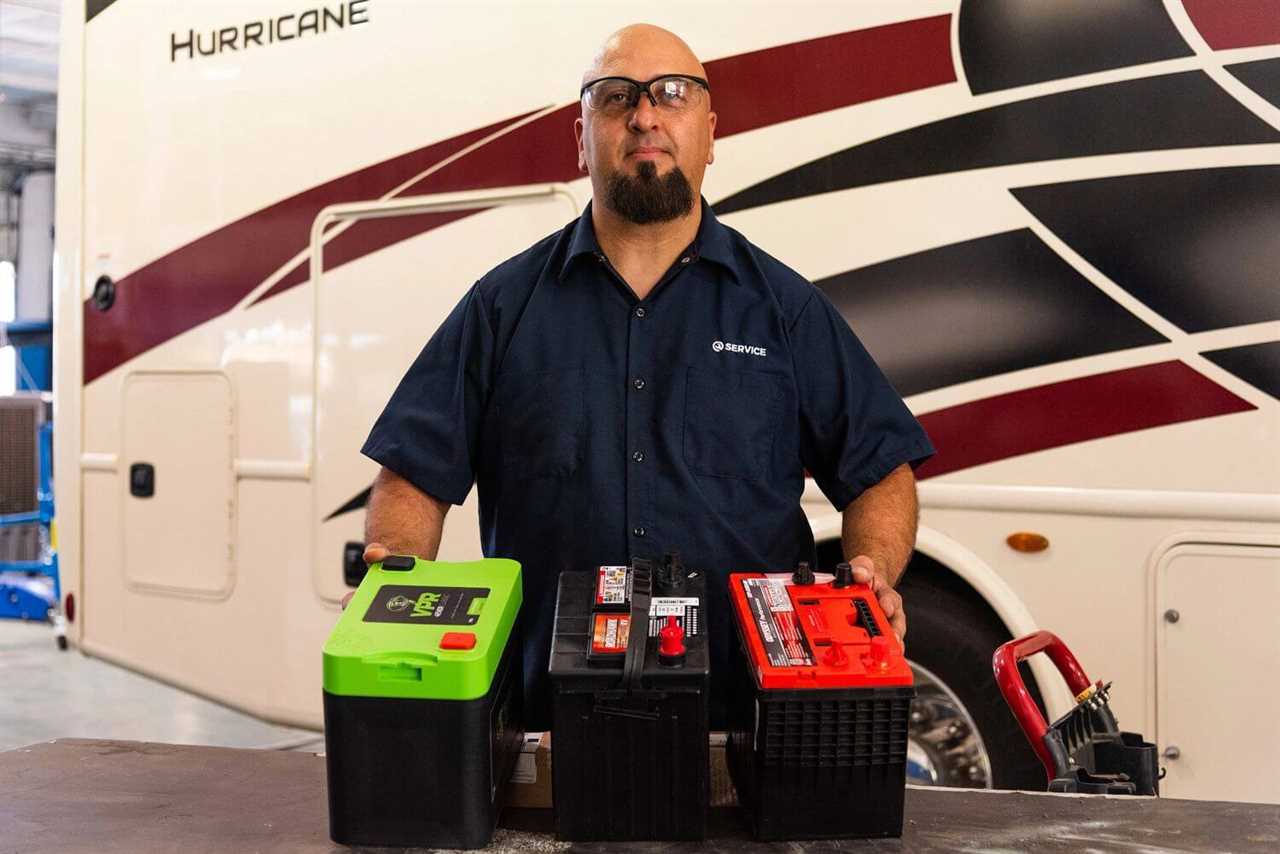
Photo by Camping World
If your RV is unplugged and your battery dies, you’ll be without power in your coach. Using your RV without a battery isn’t recommended, as the 12-volt components inside often draw more amperage than your converter can supply.
Your battery is essential for providing the power to operate these components safely. If your RV is plugged in and the battery is disconnected, some small electronics, such as RV lights, may work off the converter alone. But maintaining a healthy battery in your RV is essential to safe RV use.
If you do need to disconnect your battery for any reason, power off all 12 volt appliances inside. Then consult your owner’s manual for the proper disconnection and replacement procedures.
What Does an Inverter Do in an RV?
If you’re dry camping or boondocking and not using a generator, installing an RV inverter is a good idea if your RV didn’t come with one pre-installed. RV inverters change DC to AC, but you’ll need to consult your owner’s manual for specifications on what type of inverter suits your RV and the appliances you want to power.
How to Test an RV Inverter
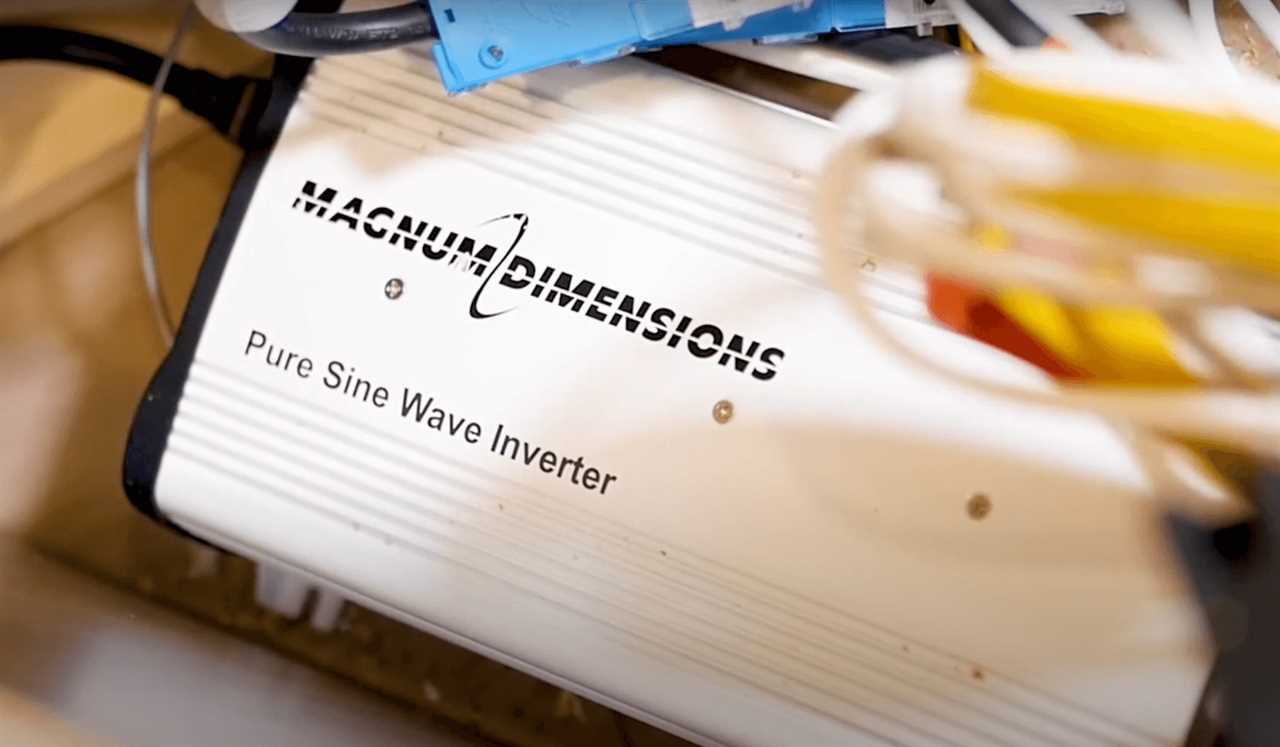
Photo by Camping World
Use this sequence to test if your RV’s inverter is functioning correctly:
- Disconnect from shore power and other power sources (like an RV generator).
- Turn on appliances powered by the inverter one at a time.
- If an appliance is working, turn it off before testing another appliance.
- After checking appliances, plug a small accessory into any outlets powered by the inverter to test them.
Most RV inverters only operate one or two circuits of your RV’s electrical system. Some high-end luxury RVs offer the ability to invert all circuits using multiple inverters. But most RV inverters power specific outlets or appliances, such as your refrigerator, microwave, or television.
Your owner’s manual will tell you which outlets or appliances should be powered by your inverter. But if you’re having trouble locating that information, contact your RV’s manufacturer.
If all the appliances and outlets on the inverter’s circuits are working properly, your inverter is doing its job. But further troubleshooting is required if you encounter a lack of power at any outlet or appliance.
How to Troubleshoot RV Inverters
Different symptoms will call for different RV inverter troubleshooting procedures. Because there are various inverter makes and models out there, your owner’s manual is your best resource for specific troubleshooting procedures.
That being said, here are some general troubleshooting tips for RV inverters:
Check for Adequate DC Power Supply

Photo by Camping World
- Most RV power inverters are equipped with a status light.
- If the status light is off, you usually have one or two problems:
- The inverter is switched Off.
- There’s no DC voltage connected to the inverter.
- To remedy:
- Switch the inverter On.
- Connect a battery with the correct voltage.
A healthy RV battery should have a voltage above 12.5 volts DC. If the voltage is between 12.5 and 10 volts DC, your battery may be wearing out, but it may just need to be charged. Charge it until you get a reading of about 12.5 volts DC and wait 2-3 hours before retesting.
If the voltage is below 10 volts DC on the initial test, your battery may be bad, but it may also need to be recharged. If there’s a continuous draw on the battery, such as a light that was left on, it could draw the battery below 10 volts DC. While this may shorten the battery’s life, it doesn’t mean you have a bad battery.
Please refer to our guide on troubleshooting RV batteries and lights for tips on ensuring your RV is equipped with healthy coach and engine batteries. And if you have determined you have a battery, you’ll need to replace your RV battery before further testing.
Test Incoming AC Voltage
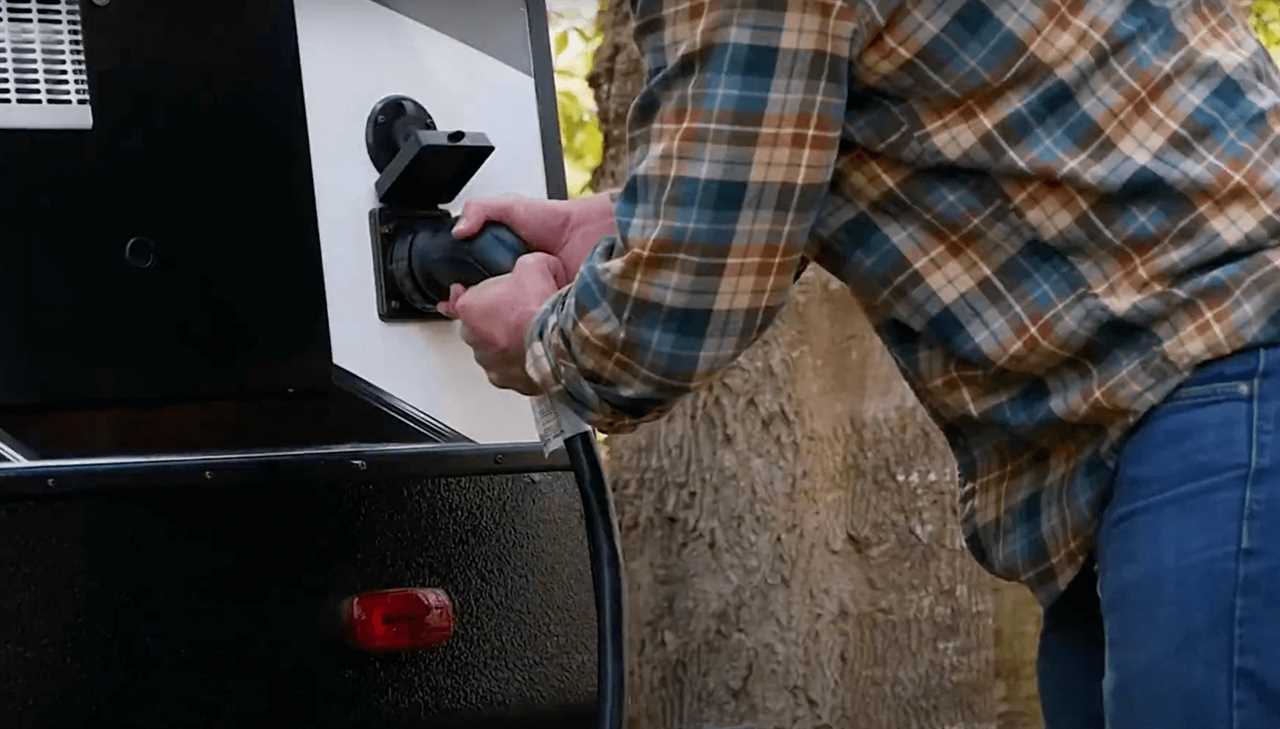
Photo by Camping World
- Some units are equipped with a dropout setting if the incoming AC voltage is lower than the programmed threshold (80 volts AC is standard on many units.)
- To test:
- Set volt meter to the volts AC setting.
- Connect meter probes to AC neutral and lead wires.
- Red probe to lead wire.
- Black probe to neutral wire.
- Ensure voltage is present and above your inverter’s volts AC dropout level.
If it is below the minimum threshold, you have an inadequate shore power source that could damage your RV’s electrical system. You should already be utilizing a surge protector to protect your RV, but disconnect immediately if you find low voltage.
Check Circuit Breakers and Fuses
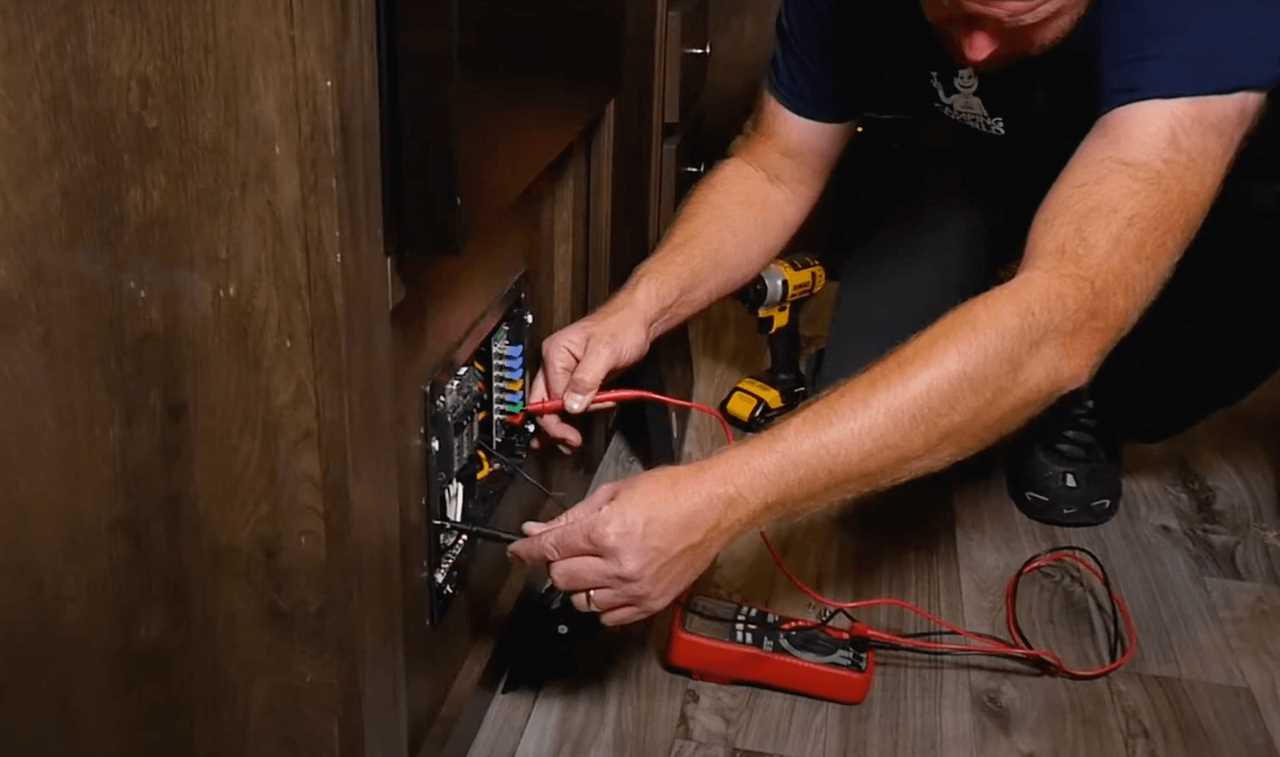
Photo by Camping World
- Turn off any and all appliances/devices that aren’t functioning properly.
- Locate your RV’s electrical panel (consulting your owner’s manual may be necessary).
- Identify the breaker that serves the malfunctioning device/appliance.
- The chart on the inside of the panel door should indicate which breakers serve which parts of your RV.
- Note the position of the breaker’s handle. If it’s tripped, it’ll be positioned somewhere between the On and Off positions.
- To reset, push the handle to the Off position before returning it to the On position.
- Turn the malfunctioning device/appliance on to test.
- Leave it on for 30-60 seconds to confirm it’s working properly.
If your breaker trips again or is repeatedly doing so, there are two possibilities: a defective breaker or the appliance is drawing too much battery power. In either case, consult an RV service technician for advice on your best course of action.
Examine the Cooling Fan

Photo by Camping World
- If no issues are present with your battery, incoming AC shore power source, circuit breakers, or fuses, your inverter’s cooling fan could be the culprit.
- The fan should cycle on and off periodically when your inverter is in use.
- Listen for the fan to cycle to ensure it’s functioning properly.
- Heat buildup can melt or damage critical inverter components if it doesn’t.
- To check:
- Visually inspect your inverter for melted parts or other deformities.
- Ensure there’s plenty of open space around the inverter to allow airflow.
Working with electrical systems on recreational vehicles can be tricky. While they’re not overly complicated, minor errors when troubleshooting can damage sensitive appliances. Sometimes, you’re better off scheduling an appointment at your nearest Camping World Service center.
And if you’re still learning the ins and outs of RV maintenance, check out our downloadable RV ownership and maintenance booklet!
But if you want to enjoy the RV lifestyle without worrying about RV maintenance, consider renting an RV for your next adventure.
What additional questions or comments do you have about RV converters and inverters? Leave them in the comments below!
By: Tucker Ballister
Title: Troubleshooting RV Converters and RV Inverters
Sourced From: blog.campingworld.com/rv-basics/maintenance/troubleshooting-converters-inverters/
Published Date: Fri, 09 Sep 2022 14:00:11 +0000
---------------------------------------------
 CampingSurvivalistHuntingFishingExploringHikingPrivacy PolicyTerms And Conditions
CampingSurvivalistHuntingFishingExploringHikingPrivacy PolicyTerms And Conditions
